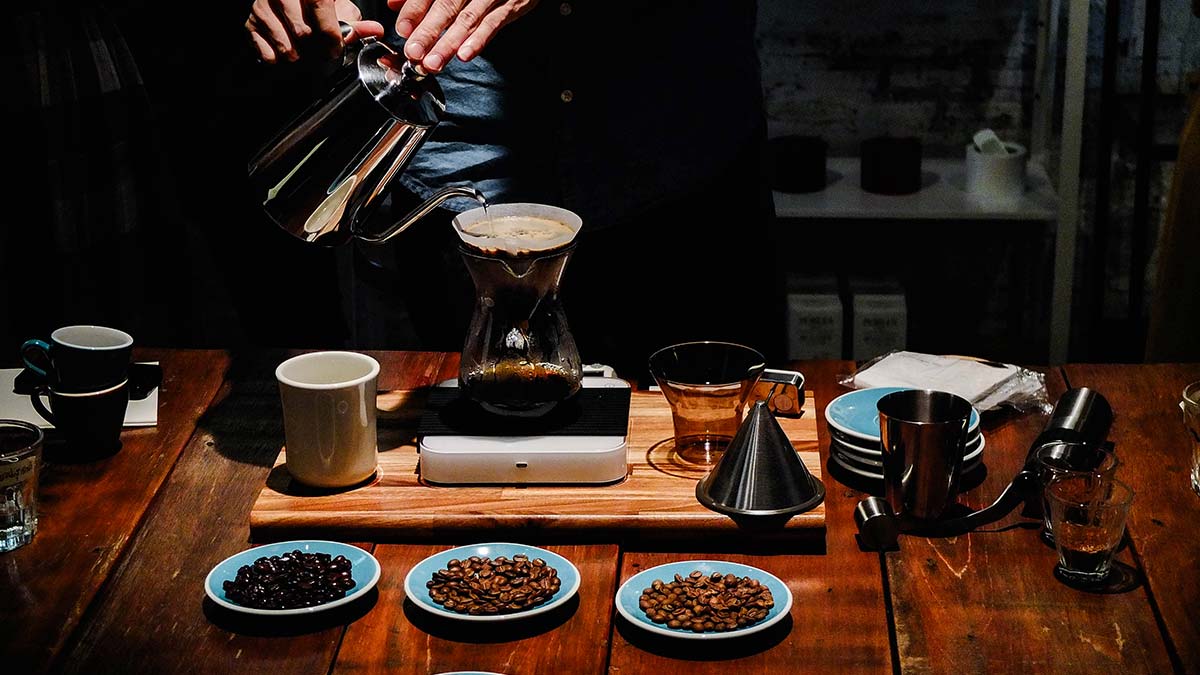Coffee has always been more than just a beverage; it's a cultural cornerstone, a morning ritual, and a canvas for innovation and creativity. As we step into what experts call the Fifth Wave of Coffee, it's worth looking back at the fascinating journey this humble bean has taken through the ages. From mass production to artisanal craftsmanship, and now to the era of advanced technology and personalization, the waves of coffee reflect the evolving values and desires of society. Let’s delve deep into these waves to understand how each one has transformed our coffee experience.
The First Wave: Making Coffee a Commodity (19th Century to Mid-20th Century)
The Birth of Coffee Culture
The First Wave of Coffee marked the transition of coffee from a luxury item to a household staple. This period, spanning from the 19th century to the mid-20th century, saw coffee become widely accessible and affordable. The focus was on mass production and convenience rather than quality and flavor.
Key Characteristics
- Mass Production: Companies like Folgers, Maxwell House, and Nescafé led the charge in making coffee a commodity. They introduced innovations such as vacuum-sealed cans and instant coffee, which made coffee more convenient for the average consumer.
- Convenience Over Quality: The emphasis was on making coffee easy to prepare. Instant coffee, in particular, became a popular choice for its simplicity and speed.
- Marketing and Branding: Brands focused heavily on marketing to establish their products as essential household items. Slogans like "Good to the last drop" (Maxwell House) and "The best part of waking up" (Folgers) became ingrained in popular culture.
The Impact
The First Wave succeeded in making coffee a ubiquitous part of daily life. However, this came at the expense of flavor and quality. Coffee during this period was often over-roasted and bland, lacking the nuanced flavors that coffee enthusiasts would come to appreciate in later waves.
The Second Wave: Coffee as an Experience (1960s to Early 2000s)
The Rise of Coffee Culture
The Second Wave of Coffee began in the 1960s and extended into the early 2000s. This era saw the emergence of coffeehouses as social hubs and the introduction of specialty drinks. Coffee became more than just a beverage; it became an experience.
Key Characteristics
- Specialty Coffee and Espresso Drinks: The introduction of espresso-based drinks such as lattes, cappuccinos, and macchiatos transformed the coffee experience. These drinks offered a variety of flavors and textures that were previously unavailable.
- The Coffeehouse Culture: Coffeehouses like Starbucks, Peet's Coffee, and Caribou Coffee created spaces where people could gather, relax, and enjoy their coffee. These venues became popular spots for socializing, studying, and working.
- Focus on Experience: The emphasis shifted from mere convenience to the overall experience of drinking coffee. The ambiance of coffeehouses, the craftsmanship of baristas, and the variety of flavors contributed to a richer, more enjoyable coffee experience.
The Impact
The Second Wave elevated coffee from a commodity to a lifestyle. It introduced consumers to the idea that coffee could be more than just a quick pick-me-up; it could be an indulgent, social experience. However, while the quality improved compared to the First Wave, there was still room for greater emphasis on the origin and craftsmanship of the coffee itself.
The Third Wave: Coffee as an Art (Early 2000s to Today)
The Artisanal Revolution
The Third Wave of Coffee, which began in the early 2000s and continues today, takes a fundamentally different approach to coffee. This wave treats coffee as an artisanal product, akin to fine wine. The focus is on quality, sustainability, and the story behind each cup.
Key Characteristics
- Single-Origin Coffee: Coffee shops and roasters began to highlight the origins of their beans, offering single-origin coffees that showcase the unique flavors of specific regions and farms.
- Direct Trade and Sustainability: There is a strong emphasis on ethical sourcing and sustainability. Roasters establish direct relationships with coffee farmers to ensure fair prices and sustainable practices.
- Innovative Brewing Techniques: Methods such as pour-over, Chemex, AeroPress, and siphon brewing gained popularity for their ability to extract the best flavors from high-quality beans.
- Transparency and Education: Coffee shops began to educate consumers about the nuances of coffee, from the growing conditions to the roasting and brewing processes. Transparency in the supply chain became a key selling point.
The Impact
The Third Wave revolutionized the coffee industry by treating coffee with the respect and care it deserves. It brought a level of craftsmanship and artistry to coffee that was previously unseen. This wave also raised awareness about the importance of sustainability and ethical sourcing, making consumers more conscious of their coffee choices.
The Fourth Wave: Science and Sustainability (Late 2010s to Today)
The Technological Integration
The Fourth Wave of Coffee, emerging in the late 2010s, builds on the foundations laid by the Third Wave but integrates more science and technology into the coffee-making process. This wave emphasizes precision, sustainability, and health benefits.
Key Characteristics
- Scientific Approaches: Advanced techniques and scientific knowledge are applied to every aspect of coffee production, from farming to brewing. This includes precise temperature control, water chemistry, and extraction methods.
- Sustainability and Ethics: There is an increased focus on sustainable practices, from eco-friendly packaging to reducing the carbon footprint of coffee production. Ethical sourcing remains a priority, with even greater transparency in the supply chain.
- Health and Wellness: The health benefits of coffee are highlighted, with an emphasis on antioxidants and other beneficial compounds found in coffee. There is also a trend towards healthier coffee options, such as reduced sugar and plant-based milk alternatives.
- Technological Advancements: Innovations such as smart coffee machines, app-controlled brewing devices, and blockchain for traceability are becoming more common. These technologies help improve the consistency and quality of coffee while ensuring transparency and accountability.
The Impact
The Fourth Wave has further refined the coffee experience, combining the artistry of the Third Wave with scientific precision and technological advancements. It has also strengthened the focus on sustainability and health, aligning with broader societal trends towards ethical consumption and wellness.
The Fifth Wave: Personalized Coffee Experiences (Futuristic)
The Future of Coffee
The Fifth Wave of Coffee, which is speculative but increasingly plausible, envisions a future where technology and personalization transform the coffee experience even further. This wave is characterized by hyper-personalization and the integration of artificial intelligence (AI) and advanced data analytics.
Key Characteristics
- AI and Data Analytics: AI and machine learning algorithms analyze vast amounts of data to tailor coffee experiences to individual preferences. This could include personalized brewing methods, flavor profiles, and even recommendations based on past purchases and taste preferences.
- Hyper-Localized Markets: Coffee production and consumption become more localized, with a focus on supporting local farmers and businesses. This trend towards hyper-localization enhances sustainability and reduces the environmental impact of coffee transportation.
- Ultra-Specialized Products: Coffee products become increasingly specialized, catering to niche markets and unique preferences. This could include custom blends, limited edition releases, and exclusive collaborations with renowned coffee producers.
- Advanced Technology Integration: Cutting-edge technologies such as blockchain for supply chain transparency, IoT-enabled coffee machines, and augmented reality experiences in coffee shops create a seamless and engaging coffee journey.
- Climate Adaptation: AI and advanced data analytics help predict and mitigate the effects of climate change on coffee production. By analyzing weather patterns and crop data, farmers can make informed decisions to optimize yields and maintain quality.
The Impact
The Fifth Wave promises to push the boundaries of what coffee can be, creating highly personalized and technologically advanced experiences. This wave is likely to enhance consumer engagement, foster deeper connections with local communities, and drive innovation in sustainable coffee production.
Conclusion: The Evolution Continues
The journey of coffee through these five waves reflects the evolving values and desires of society. From the commoditization of the First Wave to the artisanal focus of the Third Wave, and now to the tech-driven personalization of the Fifth Wave, each era has brought its own unique contributions to the coffee landscape.
As we stand on the brink of this new era, it's exciting to imagine how coffee will continue to evolve. Whether you're a casual coffee drinker or a dedicated enthusiast, the future holds endless possibilities for richer, more engaging coffee experiences. The waves of coffee have not only transformed the way we drink coffee but also how we think about it—celebrating its complexities, respecting its origins, and embracing its potential.
So, the next time you sip your favorite brew, take a moment to appreciate the journey that coffee has taken to reach your cup. From the fields of Ethiopia to the cutting-edge coffee shops of today, coffee's evolution is a testament to our relentless pursuit of quality, sustainability, and innovation. Here's to the next wave of coffee and all the exciting adventures it will bring. Cheers!



